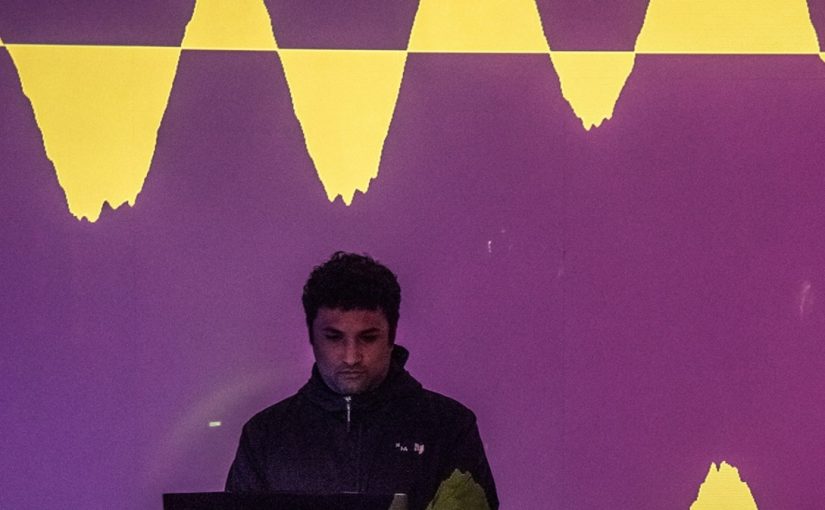Michael-Jon Mizra is interested in how cellular automata can be used to aid musical composition and how to perform and control various synthesis processes, such as additive and subtractive synthesis, granular synthesis, and other synthesis processes based on signal modulation. He is inspired by the simple rules that lead to great complexity in systems such as Conway’s Game of Life (GOL). In the GOL, there is a grid of cells, and each cell can either be dead or alive depending on how many other cells surround it. With each step forward in time, the cells update, and a world takes shape. The beauty of this system is that one cannot predict, from the initial conditions, whether the world will enter a stable state or continue to change for eternity. This unpredictability inspires him as a tool for performance and composition.
The traditional medium through which an audience may experience the GOL is sight and visualization. He is challenged by translating this in a meaningful way to sound, considering it a tension between the temporal and spatial dimensions. It is possible to “go up” a dimension, look down upon the grid, and see the whole as an interaction of the parts. But music is a temporal phenomenon. It’s not possible to “go up” a dimension in time and “hear” how there is no beginning and no end. Instead, we must listen and make deductions; what happened before implies what may happen next. We must search for patterns and store information for later retrieval.
Mizra hopes to find answers—answers gleaned not from tackling the problem head-on but from approaching it from an angle, allowing him to uncover something new.
